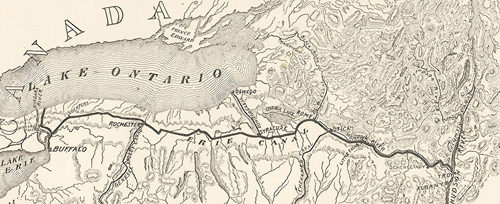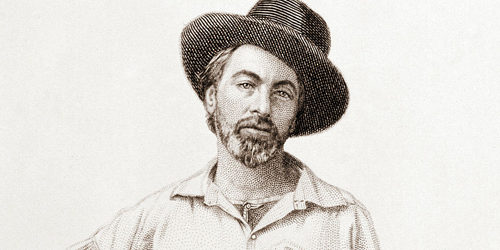8 Other Things That Happened on the Fourth of July, and One That Didn’t
Independence Day is such an institution in the United States that when we hear “Fourth of July,” many of us think of it first as the name of a holiday and not simply — as it is in so many other countries — a calendar date. Considered the birthday of America, the holiday commemorates the adoption of the Declaration of Independence in 1776, but in the more than two centuries since, it isn’t the only notable event to have happened on that date.
Here are eight other things that happened on that day, plus one thing that surprisingly didn’t happen on the Fourth of July.
1. 1802: The Military Academy at West Point Opens for Instruction
What began as fortifications at the mouth of the Hudson River in 1778 is now the oldest continuously occupied military post in the U.S. In 1802, President Thomas Jefferson signed the Military Peace Establishment Act into law, which in part established a new U.S. Military Academy at West Point whose primary purpose at the time was to train expert engineers. On July 4 of that year, the new academy formally opened for instruction.
Ulysses S. Grant and Robert E. Lee were both West Point graduates, as was Confederate President Jefferson Davis. West Point grads played a big role in the U.S. military during World War II: General George Patton, General Douglas MacArthur, and General (later President) Dwight D. Eisenhower were all alumni.
West Point grads have distinguished themselves outside the military, too. Other successful alumni include astronaut Edwin “Buzz” Aldrin, Pittsburgh Steelers left tackle Alejandro Villanueva, and Duke University head basketball coach Mike Krzyzewski.
2. 1817: Construction Begins on the Erie Canal

It took eight years for engineers and laborers to create the 4-foot-deep, 40-foot wide, 363-mile-long canal that would connect Albany and the Hudson River to Buffalo and Lake Erie. But it was worth it: This massive public works project opened up travel to the west and was a key influence in turning New York City into America’s principal seaport and a center of business and finance.
In 2000, the U.S. National Parks Service designated the Erie Canalway National Heritage Corridor.
3. 1826: Thomas Jefferson Dies
It seems a poetic justice that the man most responsible for writing the Declaration of Independence should die on the 50th anniversary of its adoption. Though his exact cause of death at age 83 is unknown, his health had been in steady decline since 1818.
4. 1826: John Adams Dies
The second and third presidents of the United States died within five hours of each other. Though they fought side by side to create a free America, after they had achieved that goal, they discovered they had very different ideas about what these new United States should look like. They became bitter political rivals for decades, only rekindling their friendship later in life.
It’s a part of American legend that the 90-year-old John Adams’ last words were “Jefferson still survives,” not knowing that the younger man had passed earlier that day, but the veracity of this legend is questionable.
5. 1845: Henry David Thoreau Moves to Walden Pond
The American transcendentalist began his two-year experiment in simple living on the Fourth of July. On that date, he moved into a small cabin he had built himself on the shores of Walden Pond, near Concord, Massachusetts, on land owned by fellow philosopher Ralph Waldo Emerson. In 1854, he published his record of the experience in Walden, or Life in the Woods to moderate success.
6. 1855: Leaves of Grass published

Though the 795 copies of the first edition of Leaves of Grass — which Walt Whitman designed and published himself — included only 12 poems over 95 pages, it changed the course of poetry in America for good. Whitman added, revised, and republished his poems throughout his life so that, by the time he died and after several editions, Leaves of Grass contained 389 poems.
7. 1939: Lou Gehrig’s “Luckiest Man” Speech
On May 2, 1939, New York Yankees first baseman Lou Gehrig ended his record-setting streak of 2,130 consecutive games by benching himself for poor play. He would never play again. A month and a half later, he was diagnosed with amyotrophic lateral sclerosis.
On July 4, the Yankees held Lou Gehrig Appreciation Day in a sold-out Yankee Stadium. Gehrig, who was petrified of crowds, wasn’t originally expected to speak, but such an outpouring of love pushed him to it. That afternoon, he stepped up to the mic and delivered his “Luckiest Man” speech, which is still considered one of the most moving speeches ever given at a sporting event. In it, he acknowledged not only the fans and the other players, but even the groundskeepers and his own mother-in-law.
8. 1997: Pathfinder Lands on Mars
After a six-month journey, the first Mars Pathfinder landed on the Red Planet on July 4, 1997. It became the base station for the free-range robotic rover Sojourner — Earth’s first (successful) interplanetary rover. NASA received its first picture of Mars at about 9 p.m. that day.
Pathfinder and Sojourner collected 2.3 billion bits of data during their lifespan and sparked two decades of Mars exploration. Though the mission was only supposed to last up to 30 days, NASA continued to receive data for 83 days.
Not on the Fourth of July: The American Colonies Declare Independence from Great Britain
The members of the Second Continental Congress voted 12-0 with one abstention (New York) on a motion to officially separate the American colonies from British rule on July 2, 1776. By July 3, two Philadelphia newspapers, the Pennsylvania Evening Post and the Pennsylvania Gazette, were already reporting that “the Continental Congress declared the United States Colonies free and independent States.” That same day, John Adams wrote home to his wife, Abigail: “The Second Day of July 1776, will be the most memorable Epocha, in the History of America.” Adams believed the Second of July, not the Fourth, would become a national holiday.
What we celebrate now as Independence Day marks the day in 1776 when the final edited version of the Declaration of Independence was adopted by the Continental Congress, though the final signatures on it wouldn’t be collected until early August.